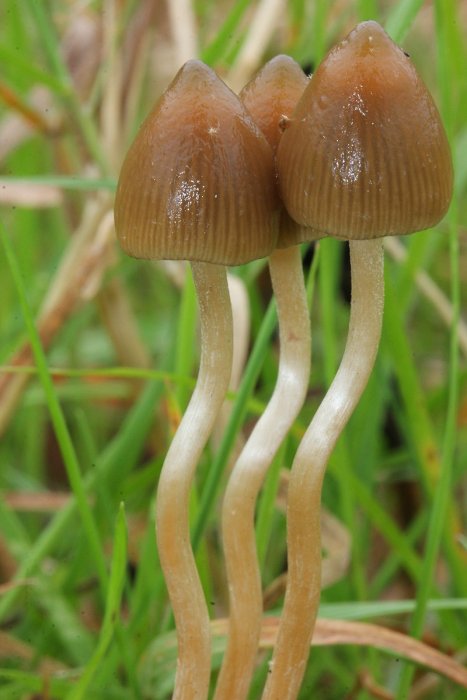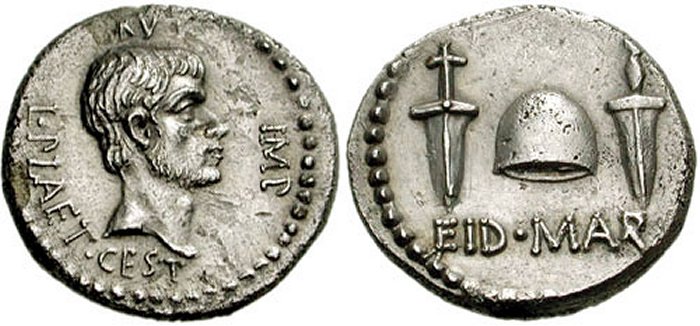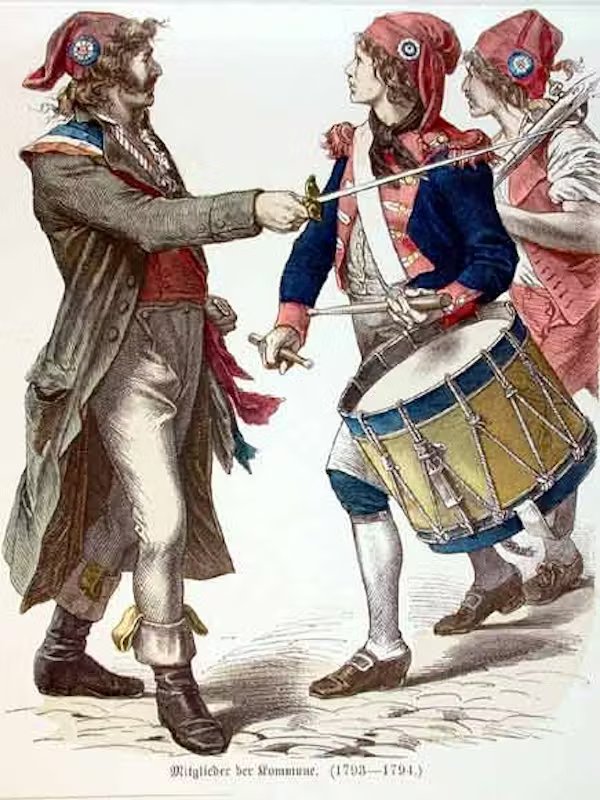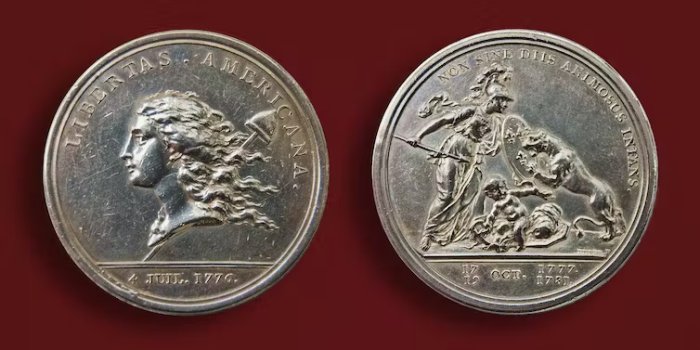AncientPages.com – It’s autumn, the best season for mushroom pickers. And mushrooms – specifically magic ones – are in the spotlight. A growing body of research is showing that psilocybin, the main psychoactive compound in magic mushrooms, has potential in treating psychological disorders like depression, addiction and PTSD. The state of Oregon voted to legalize the mushrooms for therapeutic use – a US first.

Liberty Cap mushroom. Credit: Alan Rockefeller – CC BY-SA 3.0
Of the nearly 200 species of psychedelic mushrooms that have been identified worldwide, only one – Psilocybe semilanceata – grows in any abundance in northern Europe. Like many mushrooms, Psilocybe semilanceata is generally known not by its scientific designation, but by its common or folk name, the “liberty cap” mushroom.
For years, this bothered me. As a Roman historian, I know the liberty cap (the pileus, in Latin) as a hat given to a Roman slave on the occasion of their being freed. It was a conical felt cap, shaped like that of a smurf, and which undeniably bears a clear resemblance to Psilocybe semilanceata’s distinctive pointy cap.
But how on earth did an obscure Roman social practice end up lending its name to a modern psychedelic? As I soon discovered, the answer takes us through an ᴀssᴀssination, a number of revolutions, a bit of poetry, a dash of xenophobia, and a very unusual scientific discovery.
The original liberty cap was an actual hat, worn by freed slaves in the Roman world to mark their status: no longer property, but never truly “free”, tainted by their history. For the freedman, it was a symbol both of pride and shame.
But in the year 44 BC, the hat gained a new cultural currency after Julius Caesar was famously murdered on the Ides of March (March 15). To advertise his part in the deed, Marcus Junius Brutus (of “et tu, Brute” fame) minted coins, the obverse of which bore the legend EID MAR beneath a pair of daggers and the distinctive liberty cap. Brutus’s meaning was clear: Rome herself had been freed from Caesar’s tyranny.

Brutus’s Eid Mar coin. Credit: Wikipedia
Brutus’s use of this symbol translated it from a low status social marker into an elite political symbol, and one that enjoyed a considerably longer life than the short-lived Brutus himself. Throughout the remainder of the Roman period the goddess Libertas and the liberty cap were a commonly employed shorthand by emperors keen to stress the freedom that their absolute rule bought.
Caps of revolution
With the collapse of Roman power in Europe in the fifth century AD, the liberty cap was forgotten. But then, during the 16th century, as interest in and explicit emulation of Roman antiquity began to spread through the countries of Europe, the liberty cap again reached public consciousness.
Books like Cesare Ripa’s Iconologia (1593) described the hat and its symbolism for educated audiences, and it again began to be used as a political symbol. When the Dutch drove the Spanish from Holland in 1577, coins bearing the liberty cap were minted, and William of Orange likewise minted liberty cap coins to commemorate his bloodless seizure of the English throne in 1688.
But it was in two of the great republican revolutions of the 18th century – the French and American revolutions – that it became a truly popular icon. Now blended with the visual form of the ancient Phrygian cap, the liberty cap (bonnet rougue in French) appeared no longer merely as a representational device but as an actual item of headwear or decoration.

French revolutionaries wearing bonnets rouges. Wikimedia Commons
In France, on June 20 1790, an armed mob stormed the royal apartments in the Tuileries and forced Louis XVI (later to be executed by the revolutionaries) to don the liberty cap. In America, revolutionary groups declared their rebellion against British rule by raising a liberty cap upon a pole in the public squares of their towns. In 1781 a medal, designed by no less than Benjamin Franklin to commemorate the fifth anniversary of the Declaration of Independence, Libertas Americana (the personification of American Liberty) is depicted with wild, free flowing hair, the pole and cap of liberty slung across her shoulder.
From headwear to fungi
The revolutions of France and America were viewed with considerable disquiet from Britain. But the pole and cap of liberty clearly made an impact on a young poet by the name of James Woodhouse, whose 1803 poem, “Autumn and the Redbreast, an Ode”, paid a striking tribute to the varied beauty of mushrooms:
Whose tapering stems, robust, or light,
Like columns catch the searching sight,
To claim remark where e’er I roam;
Supporting each a shapely dome;
Like fair umbrellas, furl’d, or spread,
Display their many-colour’d head;
Grey, purple, yellow, white, or brown,
Shap’d like War’s shield, or Prelate’s crown—
Like Freedom’s cap, or Friar’s cowl,
Or China’s bright inverted bowl
This seems to be the first ever connection of the physical cap of liberty and the distinctive pixie cap of the mushroom. It was clearly not used because it was an established name (note his inventive imagery with the other shapes he describes), but rather coined by Woodhouse as a poetic flourish.

The 1783 Libertas Americana medal, designed by Benjamin Franklin. Wikimedia Commons
This metaphor caught the attention of a famous reader, Robert Southey, who had reviewed the volume in which the poem appeared in 1804. In 1812, Southey, along with Samuel Taylor Coleridge, published Omniana, a two volume collection of table talk and miscellaneous musings intended to educated and inform the would-be conversationalist. Nestled in among attacks upon Catholic traditions and notes upon early English metre was the following observation on the “Cap of Liberty”:
There is a common fungus, which so exactly represents the pole and cap of liberty, that it seems offered by nature herself as the appropriate emblem of Gallic republicanism, — mushroom patriots, with a mushroom cap of liberty.
Neither Woodhouse nor Southey and Coleridge identified the precise mushroom they had in mind with the cap of liberty metaphor. But as the discipline of mycology – the study of fungi – began to cement itself in the 19th century, a field driven by precisely the kind of gentleman scholars that would have kept a copy of Omniana on their shelves, the name was clearly and universally ᴀssociated with Psilocybe semilanceata.
At that time, this was an utterly obscure and unremarkable little mushroom below the notice of any but devoted mycologists. As common names for mushrooms began to be included in mycological handbooks, Psilocybe semilanceata was routinely identified as the liberty cap.
Perhaps the earliest such example was in Mordecai Cooke’s 1871 Handbook of British Fungi. In 1894, Cooke published his Edible and Poisonous Mushrooms, which tellingly referred to Psilocybe semilanceata, within quotation marks, as “cap of liberty”, exactly the phrasing used by Coleridge, whom it would appear that Cooke was consciously quoting. By the 20th century, the name was firmly established.
A mushroom becomes magic
The story could, perhaps, end there, but it has a delightful coda, in which the liberty cap mushroom was propelled from total obscurity as merely one of literally hundreds of innocuous LBMs (little brown mushrooms) known only by scientific specialists to perhaps one of the best known members of Europe’s mycological fauna.
Throughout the literature written by Europeans on the customs and religions of the peoples of Central America, there existed rumours of a magical food that the Aztecs called teonanácatl (“the divine mushroom”). These rumours had long been discounted as supersтιтious mythologising, no more deserving of serious consideration than the shapeshifters of Norse and Icelandic saga. But in the early part of the 20th century, the divine mushroom captured the imagination of seemingly the most unlikely man on the planet, Robert Gordon Wᴀsson, the vice president of the Wall Street banking firm JP Morgan.
Since the 1920s, Wᴀsson had been obsessed with ethnomycology (the study of human cultural interactions with mushrooms). In the course of research that would lead to a voluminous bibliography, Wᴀsson travelled to Mexico and there, after a long and frustrating search, finally found a woman who was willing to initiate him in the secrets of the sacred mushroom. He became (perhaps) the first white man to intentionally ingest a hallucinogenic fungus and published his experience in a 1957 Life article, “Seeking the Magic Mushroom”.
Wᴀsson’s discovery was a sensation. In 1958 a team led by the Swiss chemist Albert Hofmann – the man who first synthesised (and ingested) LSD – was able to isolate the main psychoactive compound in the mushrooms, which was named psilocybin as a nod to the fact that it was primarily mushrooms of the genus Psilocybe that possessed the chemical. Though species of the hallucinogen fungi were most concentrated in Central America, they began to be found worldwide. In 1969, an article in Transactions of the British Mycological Society established that none other than the innocuous little liberty cap contained psilocybin.
Though there are other psychedelic species that grow in Britain (including the distinctive red and white Amanita muscaria – fly agaric – which contains muscimol not psilocybin), the liberty cap has secured a reputation as the poster-child for Britain’s domestically growing psychedelic fungi. Modern “shroomers” can’t resist punning on the liberty cap name – with its ᴀssociations to the transcendental “liberation” afforded by psychedelics – and grᴀssroots organisations such as the Shroom Liberation Front attest to this fact.
But in origin, the liberty cap’s name has nothing to do with psychologist and psychedelic drug advocate Timothy Leary (“turn on, tune in, drop out”) or the 1960s counter culture. Rather – and somewhat improbably – it traces a path back through the political revolutions of the early modern period, via the murder of the tyrant Julius Caesar, to a conical cap worn by Rome’s former slaves.
To place the cap on their heads was a sign of their liberation. To pluck the modern liberty cap from the ground could see you spending a cool seven years in jail.
Written by Adrastos Omissi, Lecturer in Latin Literature, University of Glasgow
Provided by The Conversation
This article is republished from The Conversation under a Creative Commons license. Read the original article.





